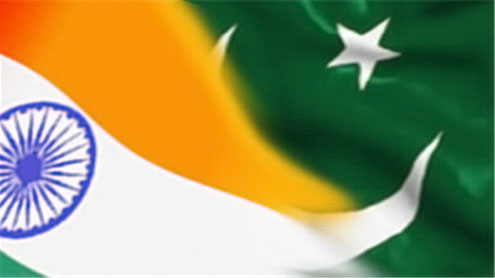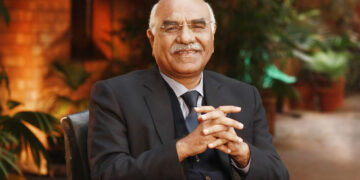
If bilateral diplomatic communication is at a zenith between any two countries, it is of India and Pakistan. Whatever the nature of their diplomatic ties, at its best, worst, mediocre or any level, it hits global headlines virtually within seconds.
If their leaders shake hands, it is ‘news’, if they decide not to, that is ‘bigger news.’ Irrespective of what they discuss, their talks carry tremendous news value. If they stay away from scheduled talks, this attracts greater media and diplomatic attention. Adding the Indo-Pak tag is enough for any issue or non-issue to secure ‘news’ and ‘diplomatic’ value.
Despite the fact that the two countries are still miles apart from reaching any agreement on crucial issues, their having reached the stage of being on talking terms has probably stunned Uncle Sam. From Washington’s perspective, how have two nuclear rivals, who retain a rigid stand on not settling differences over issues such as Kashmir, virtually ceased to entertain threat of being at war or near war-like stage? Instead, now they are paying serious attention to enhancing bilateral business ties.
Diplomatically, it would be wiser of White House to cease deciphering Indo-Pak relations from its own perspective. While analysing and theorising on various aspects of their bilateral ties, the US vision is clouded by two countries’ military strength, nuclear potential and, of course, their refusing to reach any agreement on issues they have differed over from literally day one.
It may be recalled that Washington voiced strong opposition to decisions taken by India and Pakistan about their respective nuclear policies. The United States feared that their going nuclear carried risk of India and Pakistan heading for MAD (Mutually Assured Destruction). Defying these apprehensions, India and Pakistan have pursued nuclear proliferation. In contrast to United States’ apprehension, nuclear diplomacy entertained by India and Pakistan has contributed to gradual, but definite, improvement in their relations. This is primarily due to their mutual understanding on respecting deterrent value of their nuclear prowess.
Despite nuclear diplomacy having contributed to India and Pakistan staying away from waging war against each other, Washington still views their proliferation drive as ground for a MAD phase in the subcontinent. There is no denying that prospects of India and Pakistan reaching any mutually acceptable agreement on issues, including Kashmir, remain practically non-existent. But their nuclear diplomacy has restrained them from considering war-like options to resolve these differences. This is further proved by their agreement to pursue Confidence Building Measures (CBMs).
The CBMs together with communication revolution have contributed to a new importance being given to people-to-people interaction between the two. Recent history has witnessed an increase in visits of delegations from both sides with an emphasis on people-to-people interaction. This aspect of Indo-Pak diplomacy has helped in changing misconceptions held by Indians and Pakistanis about each other. Cultural proximity entertained for centuries by these people, overshadowed for a period by tension, is serving as an important diplomatic tool in bringing the two countries closer.
Cultural proximity is marked by similarities in language, dress, food habits and numerous social norms between large sections of Indians and Pakistanis. If Urdu was not as popular in India as it is in Pakistan, it would not have led to increase in demand of Pakistani singers for Indian movies, participation of Pakistani poets in mushairas (gatherings of poets) in India, craze for Indian films in Pakistan, popularity of Pakistani dramas in India and, of course, in bringing them closer to learn more about each other. Cultural affinity has also played a major role in thawing the cold diplomatic attitude.
Diplomatically, it would be prudent for Washington to start giving importance to what brings Indians and Pakistanis closer despite their refusal to change their respective stands on issues they have always differed on.White House’s concern over war overshadows the Indo-Pak cultural linkage and makes this potential diplomatic trait incomprehensible. – Khaleejnews












